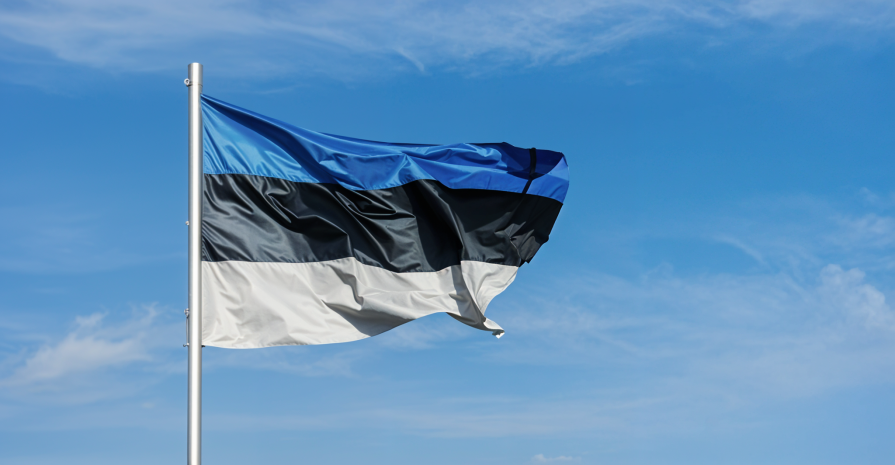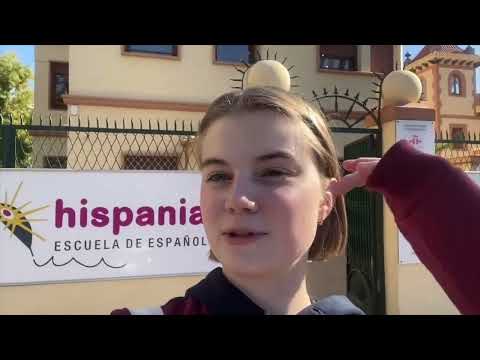The national flag of the Republic of Estonia is a rectangle in three colors: blue, black and white, from top to bottom. It has a standard size - 105 by 165 centimeters. People call the flag blue-black-white, or sinimuustvalge – in Estonian.
A short but rich story with Danish roots
The state colors of the former republican flag received a start in life thanks to students. On September 18, 1881, at the founding congress of the first historical ethnic corporation of Estonian students "Vironia" at the University of Tartu, it was decided to approve such colors for the national flag.
Six months later, Paula Herman, Miino Herman and Emilia Baermann made the first tricolor (as you can see, even then the Estonians were characterized by an anecdotal slowness). The new flag of Estonia was consecrated by Pastor Rodolphe Kallas, on June 4, 1884. The first flag has been preserved – it is exhibited in an armored showcase at the Estonian National History Museum in Tartu.
The new flag very quickly became widespread and began to be used by ethnic singing and dance societies (folk art festivals in this period became a powerful source of growth of national consciousness).
Nevertheless, the tricolor was not destined to become the flag of the Estonian province within the Russian Empire. But after the proclamation of the republic in 1918, this flag first in November 1918 became the temporary flag of the state, and then, in June 1922, the official flag of Estonia with all the rights, status, description and rules of operation.
In 1940, after the annexation of Estonia by the Soviet Union, the new Union republic was given a red cloth and allowed to write in a corner in gold letters ENSV - which meant Estonian, Socialist and Soviet Republic. The Germans also did not allow the tricolor, limiting its use only to police and volunteer units as part of the Waffen-SS - they were allowed to use national colors in attributes (chevrons, regimental badges and stripes). In all cases, the national was accompanied by a German military flag with a swastika.

After the return of the Soviets, state symbols also returned. In the mid-50s, the flag of the ESSR underwent changes - instead of a red cloth with letters in the kryzh, a flag with a "sea wave" appeared, designed to symbolize the neighborhood with the waters of the Baltic Sea, in the middle (only a sickle remained in the corner, the letters were replaced by a star), and black, cornflower and white remained to the emigrant government in Stockholm and local underground nationalists.
Again in public, the state banner appeared in 1987-1988: the Soviet Union was bursting at the seams, and people began to use the old symbol in order to emphasize: we do not want to be in the Soviet Union.
The flag was one of the important symbols of the action "Baltic Way" on August 23, 1989: almost a million residents of the three Baltic states within the USSR lined up in a human chain connecting three capitals: Vilnius, Riga and Tallinn. The total length of this chain was 671 kilometers, and in the northern part flags and homemade T-shirts with drawings depicting the flag flashed every now and then.
Earlier, on February 24 of the same year, three colors changed the socialist flag on the Long Herman Tower, marking radical changes in the state. On August 7, thanks to the consolidated position of Russian and Estonian reformers in the Supreme Council of Estonia, it became the official flag of the state with its capital in Tallinn.
Symbols, dates, laws and traditions
Interestingly, national colors are endowed with an important meaning at the level of symbols. White is a tribute to the aspirations of the people of the republic to happiness and a bright future, blue represents the sky, the sea and lakes, as well as the national idea and loyalty to principles, and black - the earth (and the national men's costume, as well as the numerous troubles that fell to the lot of these good people).
Every day, the flag with the sunrise slowly creeps along the cable to the top of the Long Herman Tower in the Estonian capital. In accordance with the law adopted in 2006, this symbol of statehood is demonstrated in state institutions, local self-government bodies and educational institutions, both primary and secondary, and higher.

Of course, the flag is also displayed on holidays and memorable dates, as well as in elections and referendums in the voting premises.
The order of state sorrows is also regulated: it is necessary either to hang a black ribbon on the flag or lower it in such a way that the lower edge of the fabric falls on the center of the pole.
Unlike many other flags in Europe, in Estonia it is allowed to be raised on the citizen's own initiative, including to demonstrate a personal position in order to celebrate a family holiday.
For improper handling of state symbols, deliberate destruction, desecration and the like, punishment is provided: a year in prison or a fine for a round sum in the national currency - the euro.
Coat of arms and antique flags
The tribals for Soviet residents remained an outlandish semi-foreign, living according to fundamentally different laws and rules than the rest of the Union. There were private cars and household appliances, available every day the sea, well caught "enemy voices", and the majority of the population dreamed of the return of independence and the old glorious days.
This was clear even at the level of state symbols – not only the flag, but also the carefully stored coat of arms of the country. Unlike most democratic countries, it has two options – big, bright, beautiful and solemn, and small. The first is used in especially solemn occasions, they also seal international treaties. It is a heraldic field of yellow color, which housed three running leopards surrounded by oak leaves. The small coat of arms is almost the same, but without a wreath. Estonians owe the appearance of both to the colonial past. In the XIII century, the Danish king Valdemar the Conqueror granted the fortress of Tallinn a coat of arms with the image of a lion. Over time, the lions became three.
The proud city by the grace of Catherine II retained its symbols, which in 1788 also became provincial. The Republic of Estonia of 1918 retained continuity, but the Soviets made changes. The coat of arms was banned. In return, the Chukho people received a round slap similar to all other emblems, where ears of wheat on one side were replaced with a pine or spruce twig. The ribbon with the name of the state and the motto was, of course, in Estonian.
Not only were these signs deeply alien to the aspirations and aspirations of the Estonian people, but they were also imposed from the outside. Therefore, it was necessary for the central government to give a slack, the proud people of this small country did not hesitate to challenge and abandon colonial paraphernalia, back in 1989 replacing the red and gold horseradish with native leopards.











